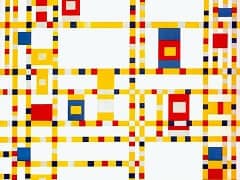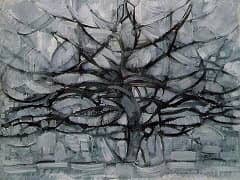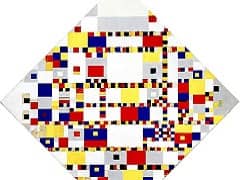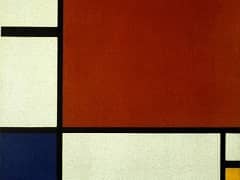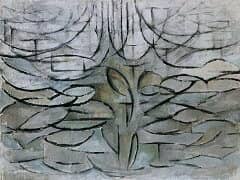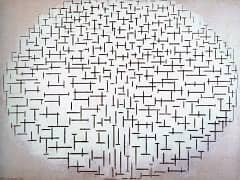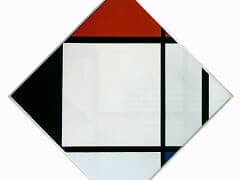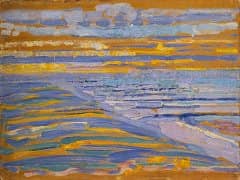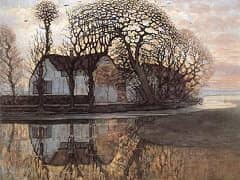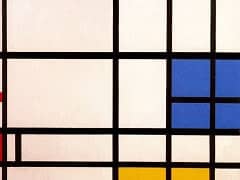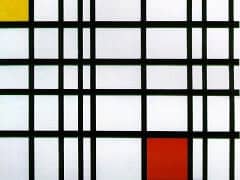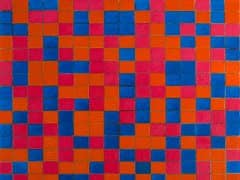Composition II in Red, Blue, and Yellow, 1929 by Piet Mondrian
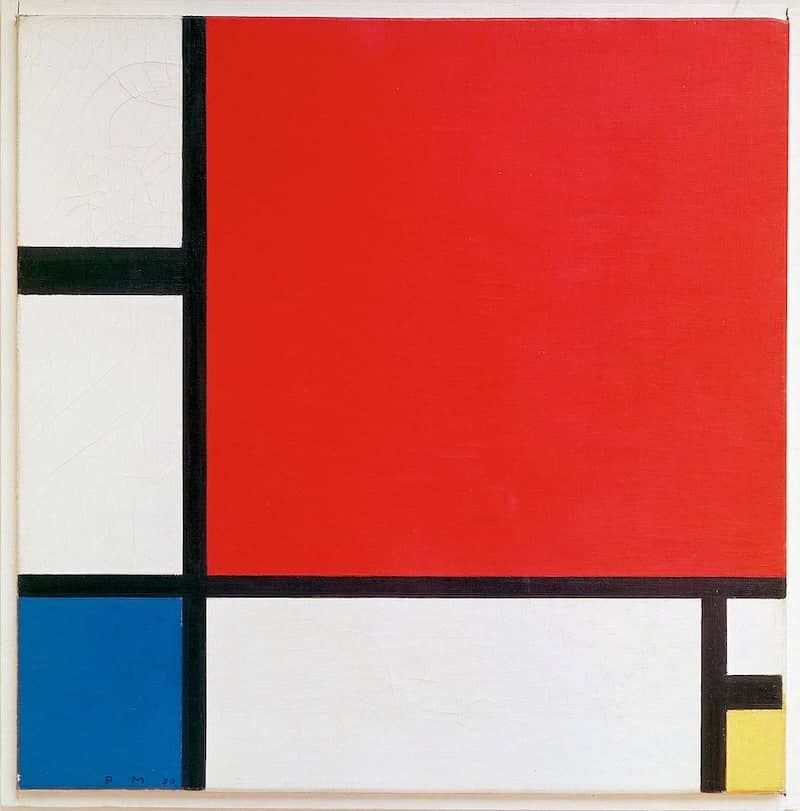
For centuries, European painters had attempted to render three-dimensional forms in believable spaces-creating convincing illusions of reality. For example, Woman with a Water Jug by Johannes Vermeer. In contrast, Mondrian and other modernists wanted to move painting beyond naturalistic depiction to focus instead on the material properties of paint and its unique ability to express ideas abstractly using formal elements such as line and color.
Around 1930 Mondrian's art attained a highpoint of purity and sobriety, for which the groundwork had been prepared in the paintings of the previous years, the 1929 Composition, for example. Actually, the Composition II in Red, Blue, and Yellow, 1930 is a variation on the picture of the preceding year, at least in so far as the linear framework is concerned. But for that very reason the subtle differences in the work - such as the subdivision of the left strip of the painting into three unequal rectangles, one of which is the blue square - are all the more remarkable. They show that there can never be any question in Mondrian of a preconceived pattern for a composition, but that every work arises out of cautious and painstaking association with the elements of painting, which must be resolved anew in every work.
Especially noteworthy in this work is the large red square in the upper right corner which, like the white square in the painting of the previous year, is bounded by only two lines within the painting and thus has a tendency to grow further, in rhythmic expansion, beyond the edge of the canvas. The large area of a brilliant primary red gives this work a strong accent in the major mode. This quality is all the more striking in a canvas dating from 1929, since in the same year Mondrian also produced paintings of an extreme sobriety, such as the two compositions with black lines, one of which is reproduced above. There, he avoided the use of color completely; the contrasts of the lines, whose thickness also varies, determines the character and balance of the composition.

